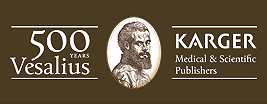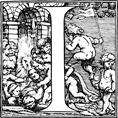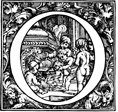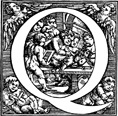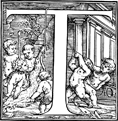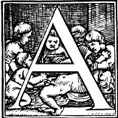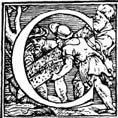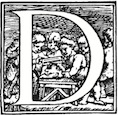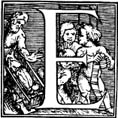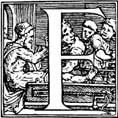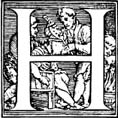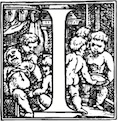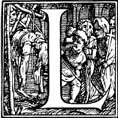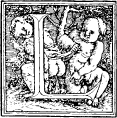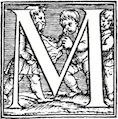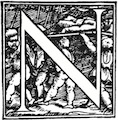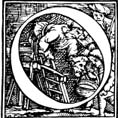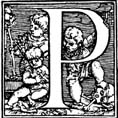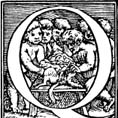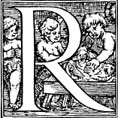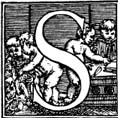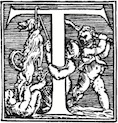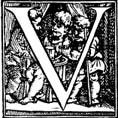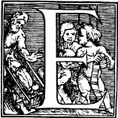
ach of the initials Vesalius used in the Fabrica tells us a unique story connected to his work as an anatomist dissecting bodies. Some of the initials show techniques used in dissecting that are described in the Fabrica for the first time. If you click on the letters, you can see them enlarged.
The first of two historiated capitals for this character shows a group of men removing the body of an executed criminal from the gallows for transport to a dissection. A hooded figure on the right holding a cross suggests that this is an officially sanctioned removal and that the remains will be given a Christian burial after the dissection.
Three medical putti inflating a lung as described in Ch. 16, Bk. VI: “[…] make a hole between the cartilages of the rough artery, insert a tube into it, pinch the rough artery above the hole, and inflate the lung. When inflated, it shows its shape more clearly and the heart is completely surrounded.”
More on these initials can be found in Samuel W. Lambert’s article “The Initial Letters of the Anatomical Treatise, De humani corporis fabrica, of Vesalius,” pp. 3–24 in Three Vesalian Essays to Accompany the Icones Anatomicae of 1934 (New York, Macmillan, 1952). See also Charles Metzger, “Les Lettrines de ‘L’Anatomie’ d’André Vesale,” Hippocrate 95.3 (1935), pp. 825–834; Gérard Chaigneau, L’illustration anatomique dans l’oeuvre d’André Vesale (Angers, 1935), pp. 73–79; Klaus Rosenkranz, “Die Initialen in Vesals Anatomie. Ein Beitrag zur Geschichte der anatomischen Abbildung,” Sudhoffs Archiv für Geschichte der Medizin und der Naturwissenschaften 30 (1937–1938), pp. 35–46.
